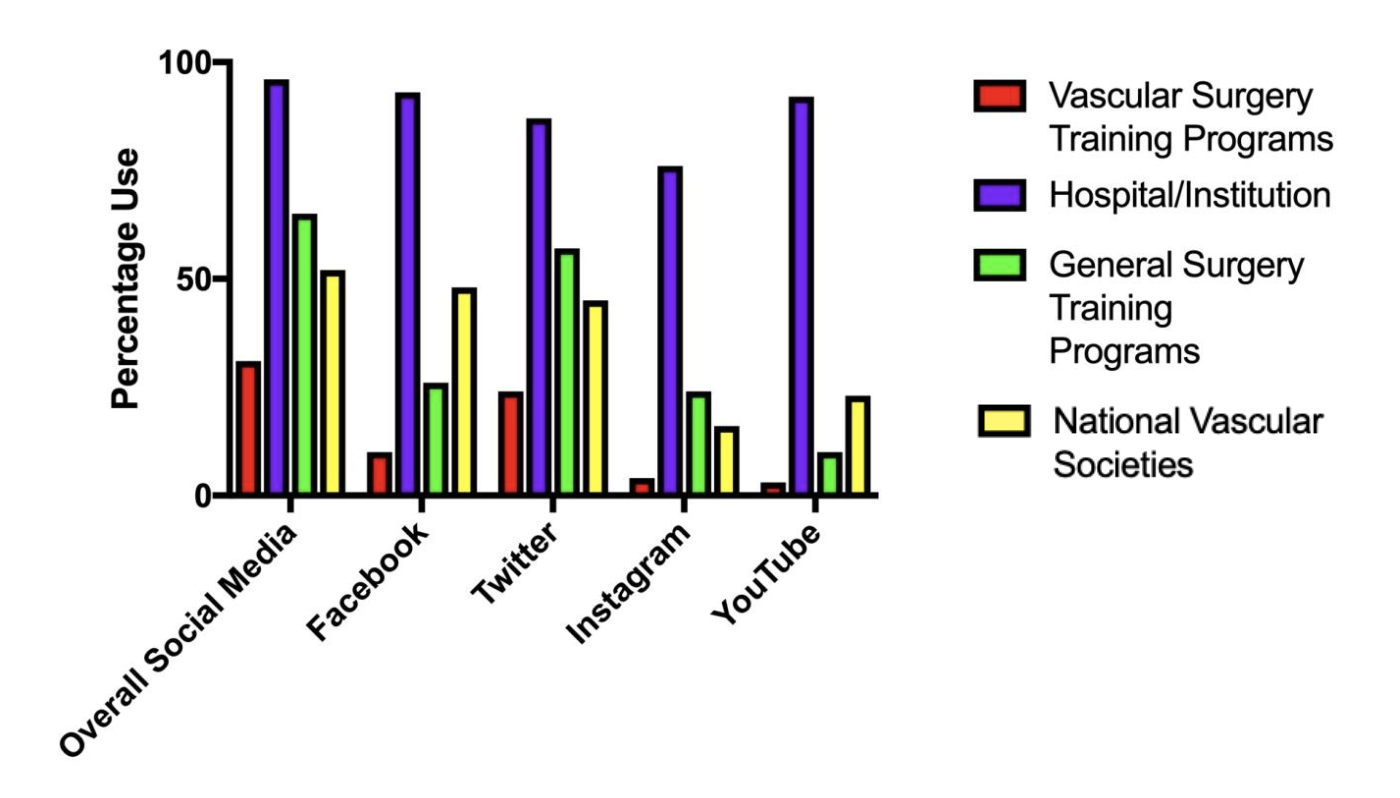The Prevalence and Utility of Vascular Surgery's Social Media Presence
Krystina Choinski, BA1, Matthew Carnevale, MD1, Issam Koleilat, MD1, John P. Phair, MD2.
1Division of Vascular and Endovascular Surgery, Montefiore Medical Center, Bronx, NY, USA, 2Division of Vascular and Endovascular Surgery, Mount Sinai, New York, NY, USA.
OBJECTIVES: There is little information describing the adoption of social media by the vascular surgery community and its effectiveness. We evaluated current trends in social media use by all accredited vascular surgery training programs (VSTP) in the United States and National Vascular Societies (NVS) in comparison to hospital/institutions and general surgery programs (GSP). METHODS: Four major social media platforms (Twitter, Facebook, Instagram, and YouTube) were individually searched for VSTP, affiliated hospital/institution, affiliated GSP profile and NVS (31 societies). Social media presence was evaluated for various variables (likes/followers/posts and content) on each platform. Statistical analysis was performed utilizing a t-test (alpha of 0.05). RESULTS: VSTP had a lower overall social media presence than their hospital/institution and GSP (31% vs 96% and 65%, p<0.001) (Figure 1). NVS had 52% social media presence. VSTP was used mostly for comments on academic activity of residents/physicians, faculty research/innovations, patient education, and trainee/faculty commendations. Twitter was the most commonly utilized media platform by VSTP, but used significantly less than institution and GSP (24% vs 87% and 57%, p<0.001). VSTP twitter had significantly less followers (P=0.0319) than GSP with an average of 637 followers, 250 posts and 66% being recently updated. NVS were present on twitter (45%) with an average of 4405 followers and 1422 posts. Facebook and Instagram use were also significantly less used in VSTP than institution or GSP (10% vs 93% and 26% p<0.001, 4% vs 76% and 24% p<0.001 respectively). Facebook was the most utilized social media by NVS (48%). YouTube channels were the least used platform in VSTP compared to institutions (3% vs 92%, p<0.001), but comparable to GSP (3% vs 10%, p=0.062). VSTP with both fellowship and integrated positions had a significantly greater social media presence than integrated only programs (45% vs 10%, p=0.041) and fellowship only programs (45% vs 26%, p=0.044). CONCLUSIONS: There is relative underuse of social media by VSTP in comparison to their institutions and general surgery programs. VSTP may modify their approach to recruitment by utilizing the follower base of institution, surgery program, and NVS.

Back to 2020 Abstracts
